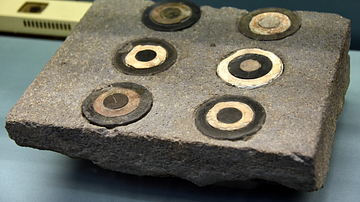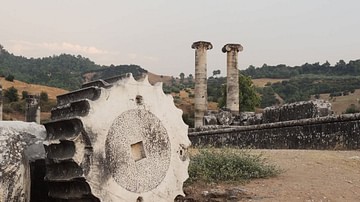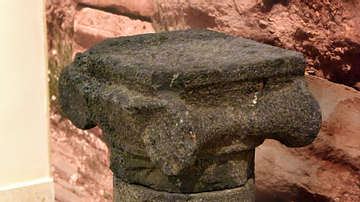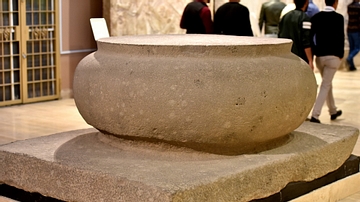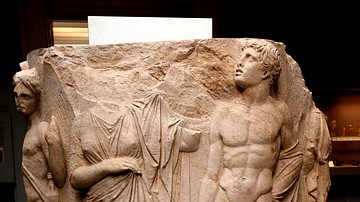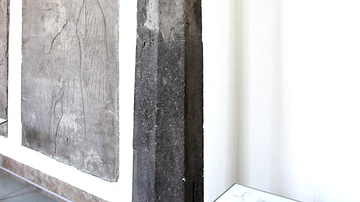Illustration
The inscription is repeated three times and reads "Ishpuini, son of Sarduri, built this temple". Ishpuini was a king of Urartu (reigned 830-810 BCE). The drum was later re-used and hollowed out to form a shallow basin with a drainage hole cut in the side. From Eastern Anatolia, in modern-day Turkey. Urartian, c. 820 BCE. (The British Museum, London).
About the Author
Cite This Work
APA Style
Amin, O. S. M. (2018, November 29). Inscribed Black Basalt Column Drum from Urartu. World History Encyclopedia. Retrieved from https://www.worldhistory.org/image/9545/inscribed-black-basalt-column-drum-from-urartu/
Chicago Style
Amin, Osama Shukir Muhammed. "Inscribed Black Basalt Column Drum from Urartu." World History Encyclopedia. Last modified November 29, 2018. https://www.worldhistory.org/image/9545/inscribed-black-basalt-column-drum-from-urartu/.
MLA Style
Amin, Osama Shukir Muhammed. "Inscribed Black Basalt Column Drum from Urartu." World History Encyclopedia. World History Encyclopedia, 29 Nov 2018. Web. 14 Apr 2025.



